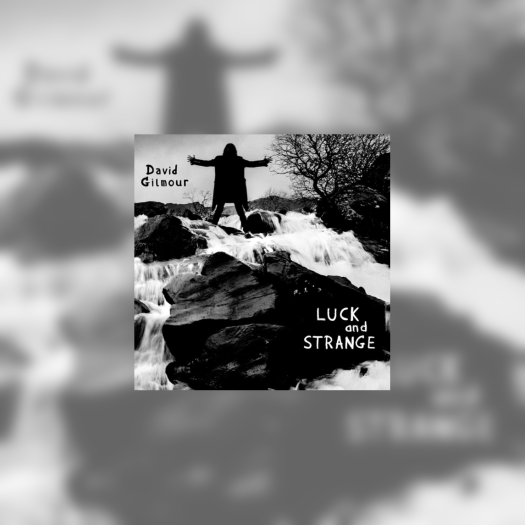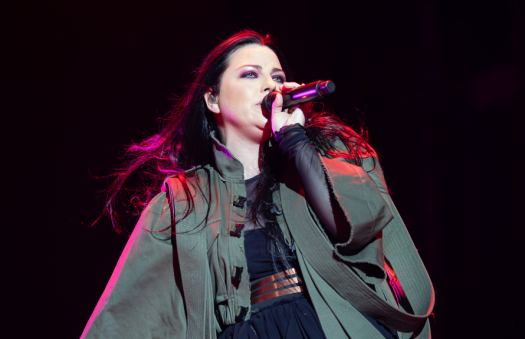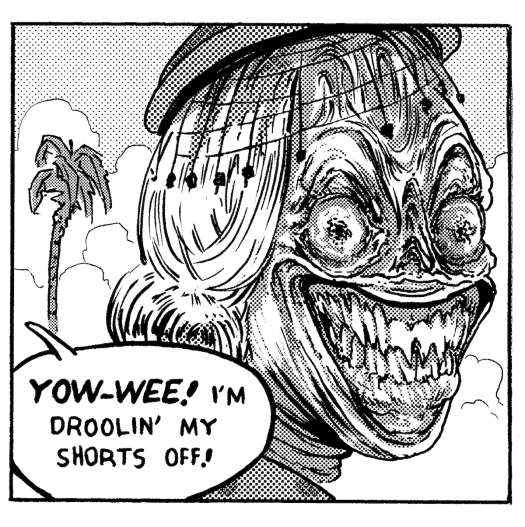The Fela Kuti brand, as his son Seun refers to it, has only grown more powerful since the man's passing in 1997. Live In Detroit 1986 is the first new Fela album since the '90s and certainly the first since Fela! the Broadway musical spread his name to far more people than ever before. Newbies are in for a surprise with this dense and uncompromisingly lengthy live performance. Recorded on his first American tour at the historic Fox Theatre in Detroit, MI, Fela unleashed yet to be recorded songs ranging in length from 28 to 40 minutes. This is not exciting music; it's a hypnotically paced political screed. I wouldn't start a Fela collection with this album, but it's well worth having.
Have you heard this recording before?
Author of Fela: The Life and Times of an African Music Icon Michael Veal: Yes, I have heard it before; it was made by a guy named Robert Teagan, an American who knew Fela and worked with him a little bit in the '90s. I'm pretty sure it was one of the first gigs on the tour and they hadn't really hit their stride yet. Plus, there was one musician [a rhythm piano player] who couldn't leave Nigeria because of visa problems, and Fela had to hire an American pianist to replace him. I can't remember that guy's name, but I believe he was the keyboardist in Roy Ayers's band. Anyway, it took a few gigs for that guy to fit into the band's sound properly.
Did you see Fela live in the U.S. around `86 when this album was recorded? If so, what were your impressions?
Yes, I did. He had just been released from prison six months earlier and was being heralded as an important African political dissident. In fact, at this time, he was probably Africa's second best-known dissident, after Nelson Mandela. Fela had gone through a very rough period in the early '80s and he had kind of gotten a second-wind after his release from prison. He wrote a string of masterful compositions in this period, but in 1986, he was just getting re-started. That tour's set-list had only one new song, "Beasts of No Nation." The other three were songs he had been performing in 1984 before going to prison.
In your biography, you wrote about the different kinds of audiences Fela performed to in the States – from Nigerian expats to American college students. Do you have any idea what the crowd was like in Detroit at this show?
I wasn't there, so I couldn't say, but I would guess it was similar to the mix at his shows in other cities: mainly Afrocentric African-Americans and white American aficionados of African music and "world beat."
Can you describe the availability of his music in the U.S. at that time?
For many years in the U.S., you could only get repressings of a few of Fela's '70s titles by a label called Makossa Editions. Capitol/EMI put out some of his more recent music during the early '80s, such as Original Sufferhead and a compilation called Black President. They later also released Live in Amsterdam, which was from a concert in late 1983. Celluloid also reissued a handful of Fela's '70s titles while he was in prison.
Was most of the music available in the U.S. at that point from the '70s? How did audiences respond to Egypt 80, whose music was quite different?
The music didn't have the visceral punch of Africa 70, but it was expanded, in terms of compositional complexity. It was an exciting, big band, and orchestral kind of Afrobeat sound. The horn charts were amazing and the tunes were stretched out over 30 minutes and built to beautiful climaxes. It was a different experience of time within a concert format. It was loose and tight at the same time, with almost 30 people on stage; it had somewhat of a festival vibe to it.
Did Fela ever really want to "make it" in the U.S.? Was he enthusiastic about touring?
I'm sure he wanted to make it, but he was more committed to just doing what he wanted to do the way he wanted to do it. He never really made any major concessions to American pop presentation; his attitude was more "take it or leave it." At most of his concerts, he would play three or four tunes that lasted about 30 minutes apiece and would talk for about 20 minutes between each song.
Read a review of Live In Detroit 1986 here.
Have you heard this recording before?
Author of Fela: The Life and Times of an African Music Icon Michael Veal: Yes, I have heard it before; it was made by a guy named Robert Teagan, an American who knew Fela and worked with him a little bit in the '90s. I'm pretty sure it was one of the first gigs on the tour and they hadn't really hit their stride yet. Plus, there was one musician [a rhythm piano player] who couldn't leave Nigeria because of visa problems, and Fela had to hire an American pianist to replace him. I can't remember that guy's name, but I believe he was the keyboardist in Roy Ayers's band. Anyway, it took a few gigs for that guy to fit into the band's sound properly.
Did you see Fela live in the U.S. around `86 when this album was recorded? If so, what were your impressions?
Yes, I did. He had just been released from prison six months earlier and was being heralded as an important African political dissident. In fact, at this time, he was probably Africa's second best-known dissident, after Nelson Mandela. Fela had gone through a very rough period in the early '80s and he had kind of gotten a second-wind after his release from prison. He wrote a string of masterful compositions in this period, but in 1986, he was just getting re-started. That tour's set-list had only one new song, "Beasts of No Nation." The other three were songs he had been performing in 1984 before going to prison.
In your biography, you wrote about the different kinds of audiences Fela performed to in the States – from Nigerian expats to American college students. Do you have any idea what the crowd was like in Detroit at this show?
I wasn't there, so I couldn't say, but I would guess it was similar to the mix at his shows in other cities: mainly Afrocentric African-Americans and white American aficionados of African music and "world beat."
Can you describe the availability of his music in the U.S. at that time?
For many years in the U.S., you could only get repressings of a few of Fela's '70s titles by a label called Makossa Editions. Capitol/EMI put out some of his more recent music during the early '80s, such as Original Sufferhead and a compilation called Black President. They later also released Live in Amsterdam, which was from a concert in late 1983. Celluloid also reissued a handful of Fela's '70s titles while he was in prison.
Was most of the music available in the U.S. at that point from the '70s? How did audiences respond to Egypt 80, whose music was quite different?
The music didn't have the visceral punch of Africa 70, but it was expanded, in terms of compositional complexity. It was an exciting, big band, and orchestral kind of Afrobeat sound. The horn charts were amazing and the tunes were stretched out over 30 minutes and built to beautiful climaxes. It was a different experience of time within a concert format. It was loose and tight at the same time, with almost 30 people on stage; it had somewhat of a festival vibe to it.
Did Fela ever really want to "make it" in the U.S.? Was he enthusiastic about touring?
I'm sure he wanted to make it, but he was more committed to just doing what he wanted to do the way he wanted to do it. He never really made any major concessions to American pop presentation; his attitude was more "take it or leave it." At most of his concerts, he would play three or four tunes that lasted about 30 minutes apiece and would talk for about 20 minutes between each song.
Read a review of Live In Detroit 1986 here.




